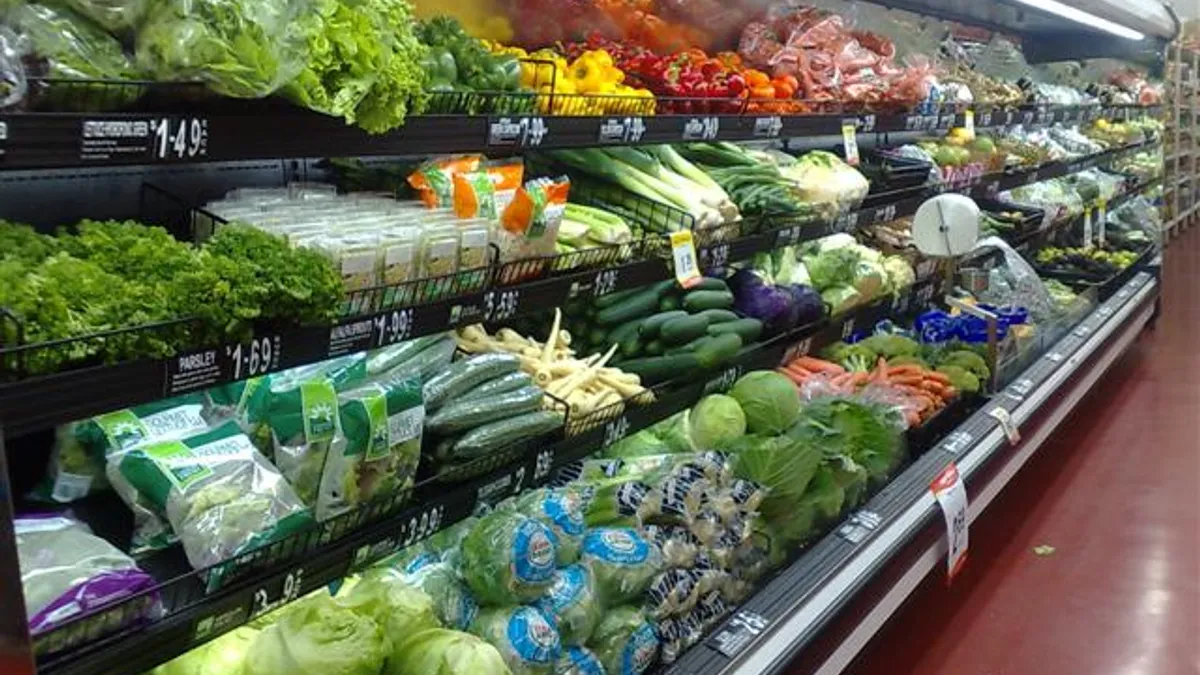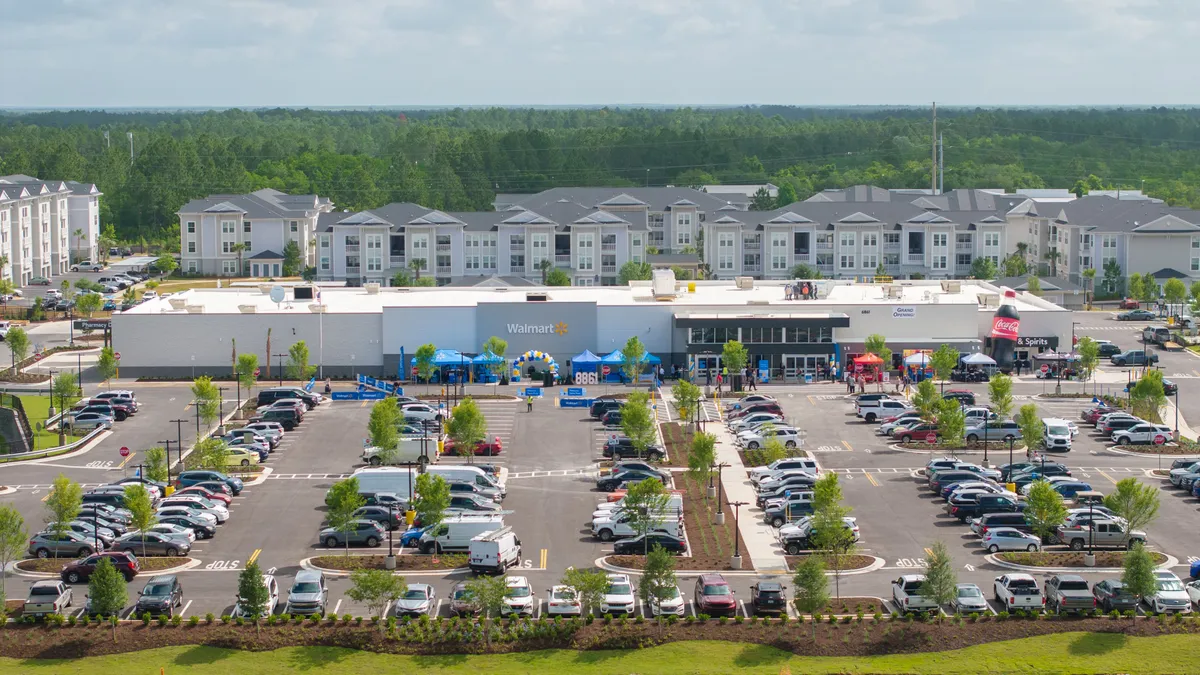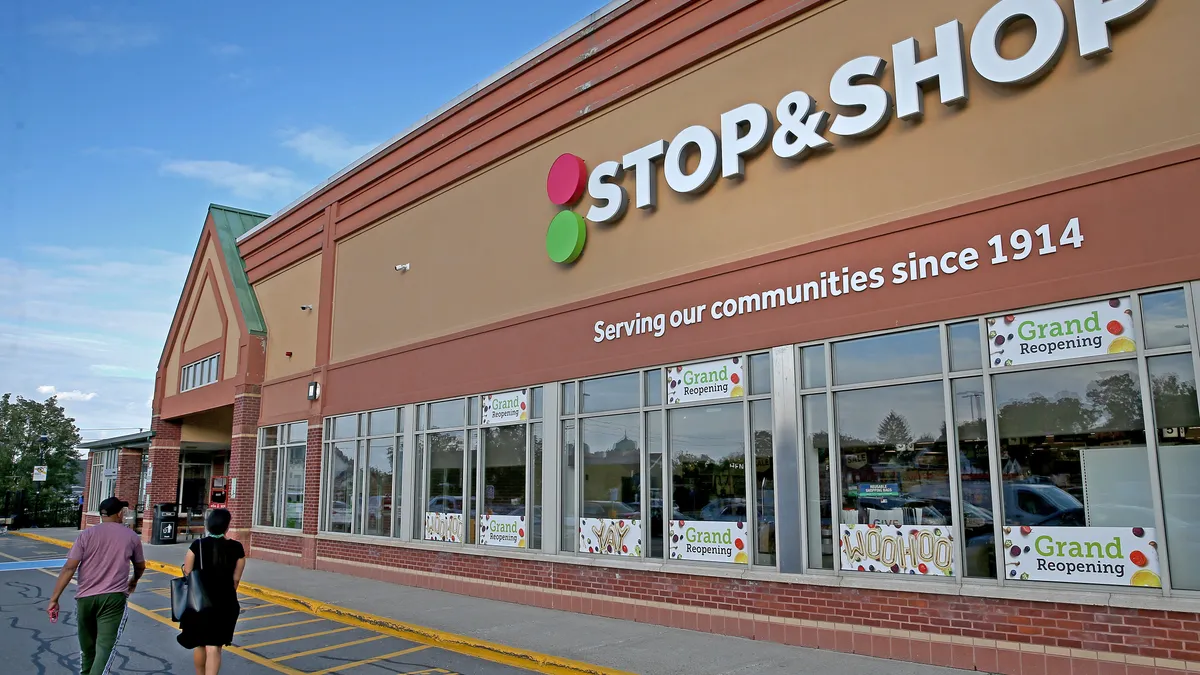Dive Brief:
- An analysis by real estate firm Redfin found that New York (75%), Philadelphia (64%) and Miami (57%) lead all major cities in access to fresh foods — defined as a grocery store or farmers’ market situated within a five-minute walk of residents.
- These top performers contrasted with cities like Oklahoma City and Colorado Springs, where just 6% of residents live within a five-minute walk of a grocery store or farmers’ market.
- All of the cities listed in the report either improved access to fresh foods compared to 2014, or stayed the same. However, it is unclear to what degree this increased access occurred in low-income areas with limited food options, commonly known as food deserts.
Dive Insight:
The improved access to fresh foods shown in the Redfin report is encouraging. However, it’s difficult to say if progress is being made in addressing food deserts, which are typically low-income neighborhoods where access to fresh foods is limited. According to the U.S. Department of Agriculture, nearly 30 million Americans live in communities without easy access to healthy food.
Grocers like Whole Foods and Trader Joe’s have built more stores in urban centers, but these are found primarily in affluent areas. Target is building more small stores with fresh foods, and even Dollar General, a chain that serves mostly rural communities, has placed stores inside metropolitan markets. But these locations are mainly targeting well-off millennials that have moved into cities over the past several years.
This isn’t to say grocers haven’t taken steps to address food deserts — or that they don’t have a meaningful role to play. Whole Foods opened a location in New York’s Harlem neighborhood last year, and another in Chicago’s notoriously food insecure community of Englewood. Out of the chain’s 470 stores, four operate in impoverished neighborhoods, according to the company.
Meijer, meanwhile, joined a ride-sharing pilot last year in Detroit that transports shoppers from food-insecure communities to its stores. The chain agreed to pick up one half of the ride cost, while consumers pick up the other half. Other grocers have tested mobile stores, while organizations have offered everything from expanding farmers’ markets to selling groceries out of old shipping containers. The Salvation Army just opened its first grocery store in Baltimore, with plans to open locations across the country.
Still, despite their good intentions, grocers’ efforts here have struggled to make an impact. Programs like the Meijer pilot have a very limited impact, while nonprofits struggle with the cost of selling fresh foods. Whole Foods is battling charges that it’s speeding gentrification rather than strengthening communities. In Newark, where Whole Foods has become part of a revitalization effort that includes luxury apartment buildings, a Marcus Samuelsson restaurant and other developments, residents say the changes are aimed at drawing wealthy new residents rather than helping existing ones, according to a recent New York Times story.
True change will have to come at the policy level, and right now the outlook isn’t very encouraging. On the one hand, a Supplemental Nutrition Assistance Program (SNAP) pilot set to begin this year will pay for online grocery purchases at Walmart and other retailers. The Trump administration’s broader initiatives for the program, however, aren’t viewed favorably by the industry. This includes cuts to funding, and a “Harvest Box” initiative that would mail out boxes of shelf-stable food to recipients rather than funding grocery store purchases.










